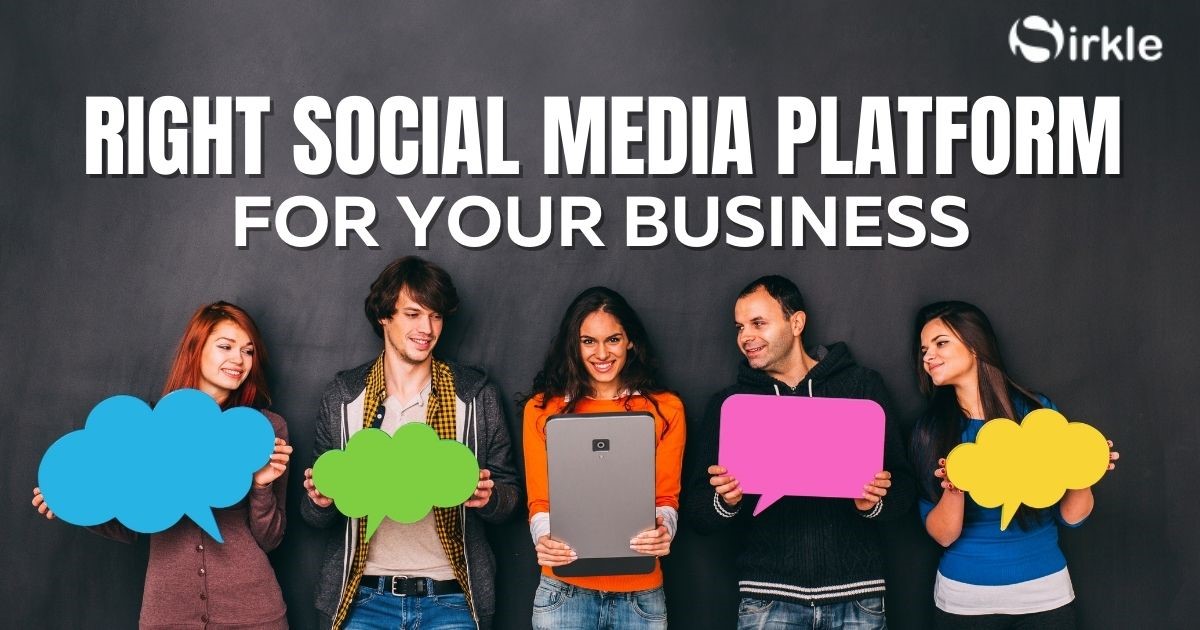Right Social Media Platform for Your Business

Being active on every social media platform out there is impossible when you're running your business. By narrowing down your choice to just a few platforms, you'll be able to focus your efforts and get the best return on your investment. But how do you choose the best social media platform for your business?
1. First, determine who your audience is
Write down your answers to the following questions to determine your target audience. You should be as specific as possible since it will make your decision easier.
- Who is your typical customer?
- How old are they?
- Are they male or female?
- What is their income and education level?
- What are they interested in outside of your product and service?
Create a profile of your audience by answering these questions (and any others pertinent to your business or industry).
2. The second step is to define your goals
If you are a business owner, your primary goal is to attract customers, but social media also can be used for creative goals. Once you know your audience, you need to define goals for that audience. Some brands use social media to promote their brands and build friendly relationships with potential customers, while others use it to support their customers.
Netflix, for instance, uses the Twitter handle @Netflixhelps to address customer service issues. Not only does this free up phone lines, but it also allows satisfied customers to promote Netflix.
Create a list of both typical and unusual ways social media could benefit your brand when creating your social media goals.
3. The third step is to find your audience
You can now find your audience once you've profiled them and defined your goals. If you want to do this, you'll need to look at the demographics of the users on each platform to determine which platform your audience uses. In addition, you should consider how active your audience is on that platform. For example, while young Facebook users may have profiles, they’re more active on Instagram or TikTok. Besides demographics and engagement, you’ll also want to look at how individuals use the platform.
To help you find your audience, here is a guide to some of the major social media platforms.
Almost 2.7 billion people use Facebook-which is more than the population of China! With all that noise, it's important to remember how individuals use Facebook: to connect with friends and build relationships. As a result, Facebook is an excellent platform for building loyalty among existing customers. Due to its large population, your posts have a limited reach-even within your own network-which makes reaching a new audience difficult.
You should consider your business goals when evaluating Facebook as a potential platform. If you're trying to acquire new business, Facebook might not be your best option, but if you're building a loyal following of clients and you need a way to stay in touch with them, this is a great option.
Twitter is an excellent platform to build awareness for your brand. Twitter uses hashtags to organize discussions around words or phrases. By searching hashtags, you can learn what people are talking about so you can craft your tweets to participate in popular conversations. In order to find stories, news outlets often use Twitter to gain insight into what topics are trending. Many brands combine Twitter with offline engagement, such as events, since Twitter is often used to provide real-time updates to an audience.
In Pinterest, users save content by “pinning” photos or videos to a virtual bulletin board. The majority of Pinterest users are female. Among the most popular pins are recipes, style ideas, striking photographs, and DIY crafts. Pinterest is a visual platform, so you’ll need strong graphics to engage users. Businesses using Pinterest have seen strong retail sales results.
YOUTUBE
The reach of YouTube extends far beyond its 2.3 billion users. With no subscription required to view content, YouTube has become one of the largest search engine platforms. Many of these searches are for “How To” videos. A service industry business offering this type of content, as well as lifestyle and educational videos, will do well on this platform.
A unique feature of LinkedIn is that it caters primarily to older audiences. It boasts the largest number of users among ages 30-49. LinkedIn also has a narrow focus, so people use it to find jobs and network professionally. Because of this, the platform is suitable for generating B2B leads, networking, and recruiting new employees.
A young audience is particularly fond of Instagram, which is one of the fastest-growing platforms. Just like Pinterest, Instagram uses photos and videos as a conversation tool. Consequently, this platform works well for businesses that deal with visuals, like art, food, retail, and beauty. Because it's a growing platform, there's less noise than on Facebook. Because of this, the platform is useful for generating leads.
TIKTOK
Known for its short-form videos, TikTok is ideal for visual businesses like art, food, retail, beauty, and some service industries. In addition to its young demographic, TikTok is a good way to build brand awareness among 18-24-year-olds.
Make your business decisions based on your goals
There are a lot of social media platforms out there now, but you don't have to use all of them. Make an informed decision by looking at where your customers spend most of their time online. Set realistic expectations and goals for your team about how much time and effort is invested in social media and the results that result. If you align your goals with the right channels, you'll be more likely to succeed and have fun at the same time!
Got questions? Visit us @ www.sirkle.com and we’re happy to help.


